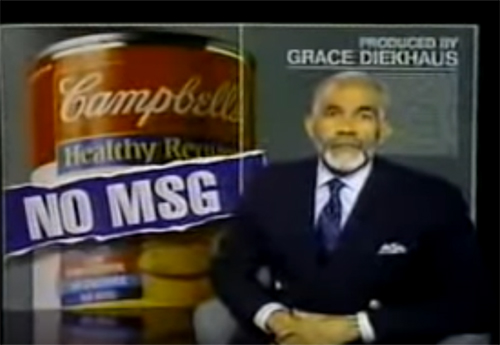If it seems like you never hear mention of the toxic nature of MSG on any nationally-aired show – cable or network – it’s true! It’s almost as if a gag-order had been issued. In fact, any talk about MSG in the media has been virtually nonexistent since the 1991 CBS 60 Minutes broadcast about the dangers of the flavor enhancer.
Sometime after the 60 Minutes program aired, Nancy Millman, writing for the Chicago Tribune, did an article focusing on the activities of Jack Samuels (co-founder of the Truth in Labeling Campaign) and his fight to have MSG labeled. According to Millman, prior to beginning her work, she had cleared the story with her editor, but the article was never published.
Similarly, the Baltimore Sun accepted and then refused to print an article on MSG by journalist Linda Bonvie, and an editor at the New York Times told Bonvie that she wouldn’t take a story that even mentioned MSG. According to Bonvie, the editor had said she was unwilling to face the pressure and intimidation that would result if she did. And in 1991, Don Hewett of 60 Minutes said, on air, that he had never had so much pressure applied to him by industry as he had prior to the airing of the MSG segment. Although rated by TV guide as one of the two most watched programs of the 1991 year, 60 Minutes has refused to run the piece again. Prior to the 60 Minutes show airing, Ajinomoto pulled out all the stops to kill it. In early 1990, we had become aware that the show was in the works, and over the course of its development had provided information to producers Grace Dickhaus and Roz Karson. In March of 1991, a producer for the CBS show called Ajinomoto with the announcement that they were thinking of doing a segment on their product.
According to the Wall Street Journal a group of trade associations launched one of the largest pre-emptive campaigns in public relations history. The WSJ said that “A crisis-management team specializing in 60 Minutes damage control has been hired to help the industry execute an elaborate game plan to forestall a repeat of the 1989 Alar-on-apples scare.”
We had received a copy of the “International Food Information Council MSG Committee/MSG Coalition COMMUNICATIONS PLAN” from an anonymous source, which detailed IFIC’s plans for scuttling the 60 Minutes segment on MSG, or, failing that, to provide for crisis management. We forwarded IFIC’s plan to the WSJ.
The IFIC, which represents itself as an “independent” organization, sends attractive brochures to dietitians, nutritionists, hospitals, schools, the media, and politicians, proclaiming the safety of monosodium glutamate. IFIC’s paid relationship to the glutamate industry is documented in the 31st edition of the Encyclopedia of Associations.
If you have questions or comments, we’d love to hear from you. If you have hints for others on how to avoid exposure to MfG, send them along, too, and we’ll put them up on Facebook. Or you can reach us at questionsaboutmsg@gmail.com and follow us on Twitter @truthlabeling.



